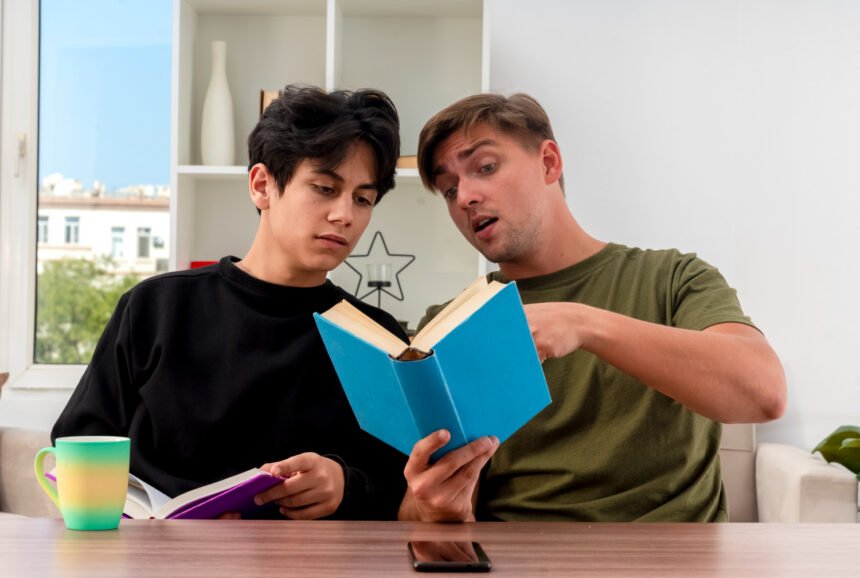Across the UK, thousands of students spend long evenings revising for tests, only to forget most of what they studied soon after. It’s a common frustration. Many young people can recite facts or repeat formulas, but when asked to explain them in their own words, they hesitate. Teachers see it too — bright pupils who do well in exams but struggle to apply their knowledge in new situations.
This problem goes deeper than exam technique. It’s about how we define learning itself. Memorising information is not the same as understanding it. The two are related, but they lead to very different outcomes. When a student only learns to pass, the knowledge fades quickly. When they understand, it stays with them for life.
Understanding transforms information into something meaningful. It’s the difference between recalling what you read and being able to use it. And in an education system that often values quick results over long-term thinking, that distinction has never mattered more.
1. Learning as Remembering Information
When most people talk about learning, they think of remembering facts, dates, or methods. This kind of learning helps students get through exams and complete homework, but it is often short-term. Many pupils read notes repeatedly until the words stick in their memory. It works for a while, but without context or deeper thought, those facts fade fast.
Learning by memorisation can be useful for some subjects, especially when basic knowledge is needed. But real education begins when students go beyond remembering and start asking questions. When the focus shifts from “What do I need to know?” to “Why does this work?”, that’s when understanding starts to take root.
Online tutoring platforms have also helped students bridge this gap. Services such as Cambridge Online Tutors UK connect learners with experienced educators who focus on developing comprehension, not just repetition. This kind of teaching encourages thinking and questioning — the key to true understanding.
2. Understanding as Applying Knowledge
Understanding is not about storing more facts; it’s about making sense of them. A student who understands can connect new ideas with what they already know. They can explain a concept to someone else or use it in a different situation.
Take science as an example. A pupil might remember that photosynthesis involves sunlight and carbon dioxide, but understanding means knowing why plants need those things and how the process supports life on Earth. That’s the point where knowledge becomes usable and long-lasting.
Understanding gives learning purpose. It helps students think critically, solve problems, and adapt — skills that matter far beyond the classroom.
3. How the Brain Treats Learning and Understanding Differently
When we only memorise, the brain stores information in a narrow way. It sits in short-term memory, where it’s easy to lose. Understanding, however, involves deeper processing. The brain builds links between ideas, making it easier to recall later.
In simple terms, when you understand something, your brain treats it as important. You can retrieve it faster and apply it more flexibly. That’s why students who focus on meaning remember information better than those who just rehearse it.
It’s not about being smarter. It’s about how the mind engages with what’s being learned.
4. Curiosity as the Starting Point for Understanding
Curiosity is often what separates real understanding from memorisation. When a student feels curious, they become active participants in their own learning. Instead of waiting for answers, they start looking for them. That small shift changes everything.
Research in education consistently shows that curiosity improves comprehension and memory. When learners connect a topic to something they genuinely care about, their brains engage more deeply. Teachers and parents can build on that by linking lessons to real-life examples. For instance, if a student is learning about the environment, connecting the topic to their local park or community makes it relevant.
Curiosity doesn’t always come naturally, especially when learning feels like a chore. But creating a safe space where questions are welcome helps students rediscover it. Once curiosity is active, understanding follows.
5. Practice and Reflection Help Learning Stick
Understanding develops through doing. Practice allows students to test what they know and identify where they struggle. But practice alone isn’t enough — reflection is what turns effort into progress.
When students pause to think about what they’ve learned, they strengthen their understanding. Simple techniques like summarising lessons, teaching others, or writing short reflections can make a real difference. These activities encourage them to process information in their own words rather than just recall it.
Reflection also helps students recognise their own learning habits. They start noticing what works best for them — whether that’s visual notes, discussion, or hands-on work. When learners understand how they learn, they take control of their education. That independence is key to long-term success.
Learning facts will always be part of education, but it shouldn’t be the end goal. True understanding prepares students not just for exams, but for life beyond school. It gives them the ability to think clearly, solve problems, and keep learning independently.
Understanding transforms education from a process into an experience — one that stays with learners long after they’ve closed their books.







